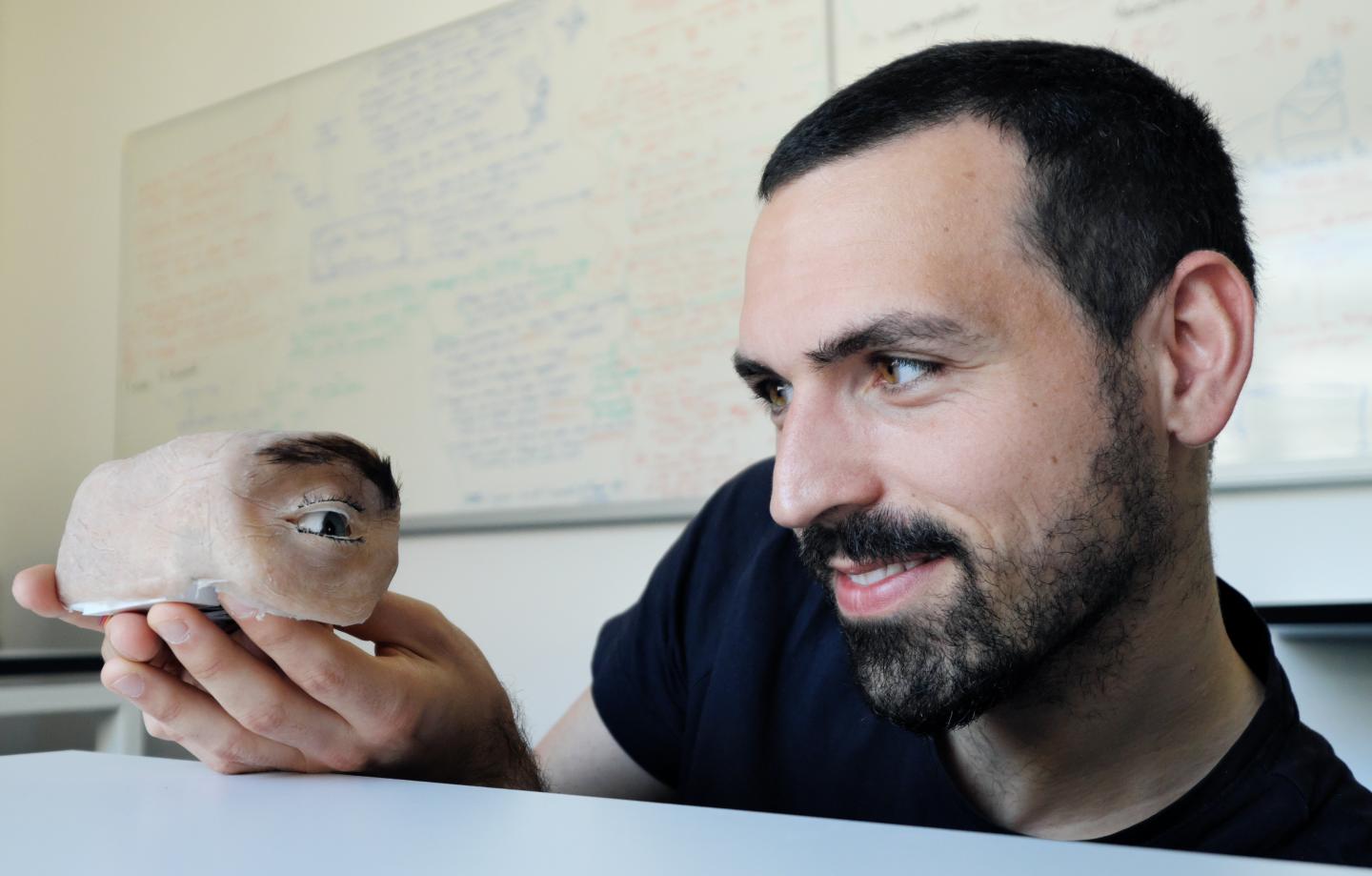Nightmarish "Eyecam" Is a Reminder of Intrusive Surveillance

Complete the form below to unlock access to ALL audio articles.
Microphones and cameras are installed everywhere these days: in smartphones, laptops, even in refrigerators and televisions. Many people are now used to their presence and no longer see them for what they actually are - omnipresent eyes and ears. A team of computer scientists from Saarland University uses an innovative design approach to critically question sensor technology that has become commonplace.
With 'Eyecam' they now present the prototype of a webcam that not only looks like a human eye, but imitates its movements realistically. "The goal of our project is not to develop a 'better' design for cameras, but to spark a discussion. We want to draw attention to the fact that we are surrounded by sensing devices every day. That raises the question of how that affects us," says Marc Teyssier. In 2020, the French scientist completed his doctorate on the topic of anthropomorphic design in Paris. Now he is a postdoctoral researcher in the Human-Computer Interaction Lab at Saarland University in Germany.
The research team at Saarland Informatics Campus has developed a webcam that not only looks like a human eye, but also realistically imitates unconscious eye movements such as blinking or raising the eyebrow. "With 'Eyecam' we are exploring the question of whether a technical device should reflect its function in its design," adds computer scientist Marion Koelle, who did her doctorate on the social acceptance of body-worn cameras. "There are different ways of seeing, all of which have their own unique connotations, such as observing, recognizing, watching, or even spying. Also, a camera designed as an eye can send nonverbal signals through facial expressions. This opens up a whole new layer of interaction that hasn't existed in technical devices before," Koelle adds.
"The research is part of a whole series of work within a large EU-funded project, the ERC Starting Grant 'InteractiveSkin'. Here we are researching how interfaces that have properties of the human body can improve the interaction between humans and computers," says lab director Professor Jürgen Steimle.

Marc Teyssier with the anthropomorphic Webcam "Eyecam". Credit: Thorsten Mohr
The researchers use the unique capabilities and optics of their new development to explore different facets of ubiquitous sensing. Already today, webcams are a potential privacy risk. 'Eyecam' exaggerates this aspect, acting as an observer by opening its eye and tracking the user with its gaze. Alternatively, the anthropomorphic camera could be used for self-reflection, with the artificial eye getting ever more tired and repeatedly falling shut as the user sits in front of the computer late at night. Or it could take on the role of a pet that is simply there, looking around from time to time and reacting with delight when its owner enters the room.
"Our application scenarios are fictional and are intended to encourage people to think about how we interact with technical devices today, but also in the future. What is special is that we can experience and recreate our imagined scenarios with the help of a physically existing prototype," says Marc Teyssier. To reach as many people as possible with their thought-provoking development, the group has published the blueprints for their device.
Reference:
Teyssier M, Koelle M, Strohmeier P, Fruchard B, Steimle J. Eyecam: Revealing Relations between Humans and Sensing Devices through an Anthropomorphic Webcam. Published online 2021:13.
This article has been republished from the following materials. Note: material may have been edited for length and content. For further information, please contact the cited source.

